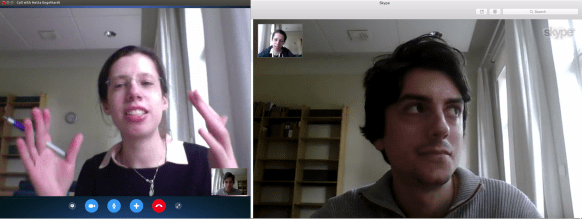Daniele Oriti is a senior researcher and group leader at the Max Planck Institute of Gravitational Physics (Albert Einstein Institute) in Potsdam, Germany, EU. Born and educated in Italy, got a PhD from the University of Cambridge, UK, and held research position at Cambridge, Utrecht University, The Netherlands, and the Perimeter Institute for Theoretical Physics, Canada. He lives and plays with physics, philosophy, and the rest of the universe, in Berlin, with his wife and son.
In this Insight, the fundamental building blocks of quantum spacetime are described by peculiar quantum field theories, then assembled to form continuum geometries, to explain the dynamics of the early universe and black holes from first principles.

Daniele Oriti is a senior researcher and group leader at the Max Planck Institute of Gravitational Physics (Albert Einstein Institute) in Potsdam, Germany.
What is space made of? What are its fundamental building blocks? Can we play with them? And what can we make out of them?
If these sound like a bunch of childish questions, it is because theoretical physicists manage to remain the children they once were for some time longer; and to make a living by asking childish questions and playing with the mathematical toys that accompany them.
The serious, only-for-adults part of the story is that we have learned from General Relativity that space and time are physical entities, so it is actually reasonable to ask if they have a microstructure. Moreover, we have several hints (e.g from black hole physics and cosmological singularities) that the continuum geometric description of spacetime on which General Relativity is based should give way to one in terms of discrete, non-geometric degrees of freedom. This is the goal of quantum gravity: a quantum theory of the microstructure of space and time, to understand their discrete non-geometric building blocks and how the usual continuum description arises in some approximation.
Modern approaches to quantum gravity are achieving just that. Loop quantum gravity, for example, identifies spin networks as the structures underlying space (and their interaction processes, spin foams, as underlying spacetime): purely combinatorial objects, graphs, labeled by algebraic data, i.e. group representations. The continuum world populated by Continue reading




You must be logged in to post a comment.